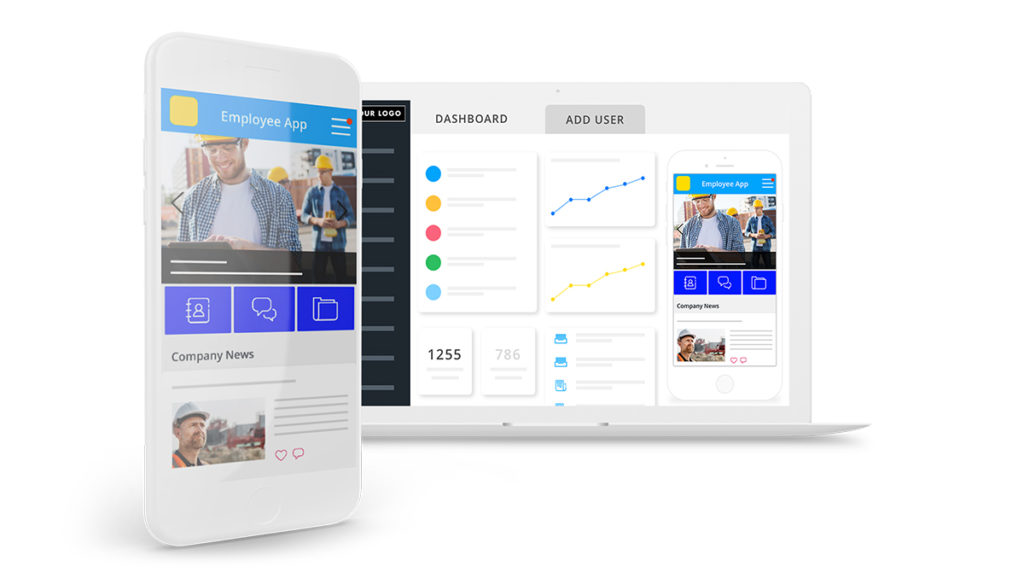
Written by Carla Corban Kath, Director of Customer Success Strategy at Staffbase
Recognition drives results. And it doesn’t cost much either. A simple thank you or an authentic show of appreciation is an invaluable attribute for any company looking to connect with its workforce and reinforce a culture of gratitude.
But in many industries, leaders struggle to show appreciation for their on-site staff, not to mention their employees who work remotely with limited connections to headquarters. This is a real problem considering that more than 40 percent of Americans are remote workers according to Gallup survey results published last year. And for some industries, such as construction, working off site is the norm for a majority of employees.
While managing a remote workforce is a common topic of discussion and training, the easy cure for a company’s engagement concerns might simply be more pats on the back. A mere one out of three US workers feel that they receive sufficient recognition for their work, according to another recent Gallup analysis.
For industry leaders struggling to make sense of this statistic and connect with staff, no matter where they’re working, these five suggestions offer straightforward ways to show gratitude for a job well done. A gesture of kindness can make a meaningful difference in leadership sustainability, project success, employee retention, and creating a thriving culture.
1. Authentic appreciation matters
Employees who enjoy brown bag lunches with their leaders and peers experience a direct dialog about corporate and personal matters on a consistent basis. They have the opportunity to create lasting bonds that extend beyond the workplace and they are often more happy and fulfilled as a result. Remote workers might not have this same face-to-face option, but leaders can make lunch-like conversations possible with off-site staff via Skype, social media, or other digital messaging solutions. And if online conversations aren’t feasible, snail mail with a leadership signature is still a meaningful instrument for staff appreciation.
2. Personalize rewards and recognition
Face time with employees (not the app on your smartphone . . . although that’s okay in a pinch) is an important appreciation strategy that shouldn’t be overlooked. Leaders who travel regularly to see employees in their environments and time zones can give handshakes that establish more trust than any emoji ever could. Such moments might not be possible as frequently as you might like, but when leadership makes the effort, employees notice. One construction company hosts four different holiday parties in four different states, with leadership attending each gathering to ensure that employees are congratulated where they work for projects well done. It takes effort, but the rewards, recognition, and relationships are totally worth it.
3. Celebrate as a team
Interactive bulletin boards, online gamification, and an up-to-date calendar of company-wide announcements that invite employee feedback are critical components of a healthy culture. The participation of employees will decrease feelings of isolation and help foster peer relationships. One company might host a best picture contest or give an employee of the week award, while another might offer an online crossword or site scavenger hunt. But no matter what works for your organization, leaders who show their support for team gatherings demonstrate gratitude for their workers.
4. Benefits speak loudly
Great benefits are a cornerstone of company cultures that spread gratitude beyond the corner office. To encourage connections between employees in remote locations, some companies, like Staffbase, offer travel stipends for their international team to visit other offices and meet colleagues, often combining work with vacation. In today’s workplace, where the competition for talent is great, benefits packages need to be just as competitive. Tipping the scale in favor of benefits will attract talent every single time. Combined with appreciation, awesome benefits might just transform an organization into an employer of choice.
5. Listening is #1
Learn about your people in all of their different locations. Listen to their daily conversations and ask questions. What do they care about? How is their culture unique? What restaurants, coffee shops, or fitness centers do they frequent? What are their favorite entertainment or leisure venues in the area? Gift cards or certificates to these places will be meaningful tokens of recognition—and they’ll confirm you’ve been listening. As for companies in various countries with employees who speak different languages, an internal communications platform featuring multilingual functionality will show respect.
In the construction industry, employees aren’t connected 24/7. In fact, most construction workers never see their CEO and communicate most directly with site supervisors, project managers, or subcontractors. Construction companies that recognize and seek out communication with their remote workforce are the ones to watch as employment estimates for the industry are on the rise. And kudos to them for their acts of employer kindness! Pat, pat.

Building Solid Construction Industry Communication with an Employee App
About The Author
Carla Kath is a purveyor of career adventures who has experienced internal communications from the inside out during her tenure in marketing for mostly nonprofit and healthcare organizations. She has great belief in the power of high fives in the workplace and devotes much of her time to employee evangelism as the Director of Customer Success Strategy at Staffbase. Raised in the South and surviving in the Northeast, her common response to honking car horns is “Be @%#$ kind!”
